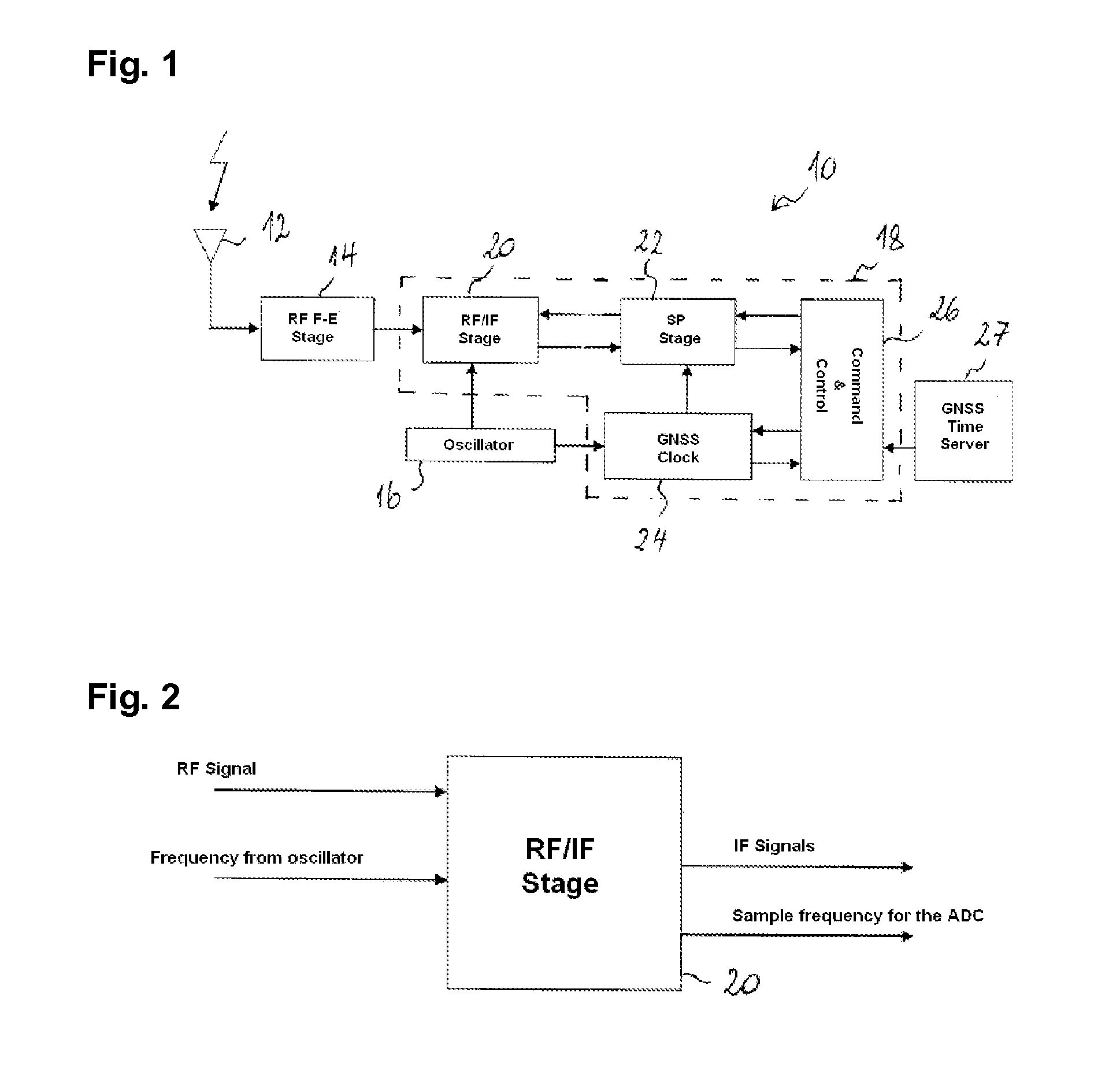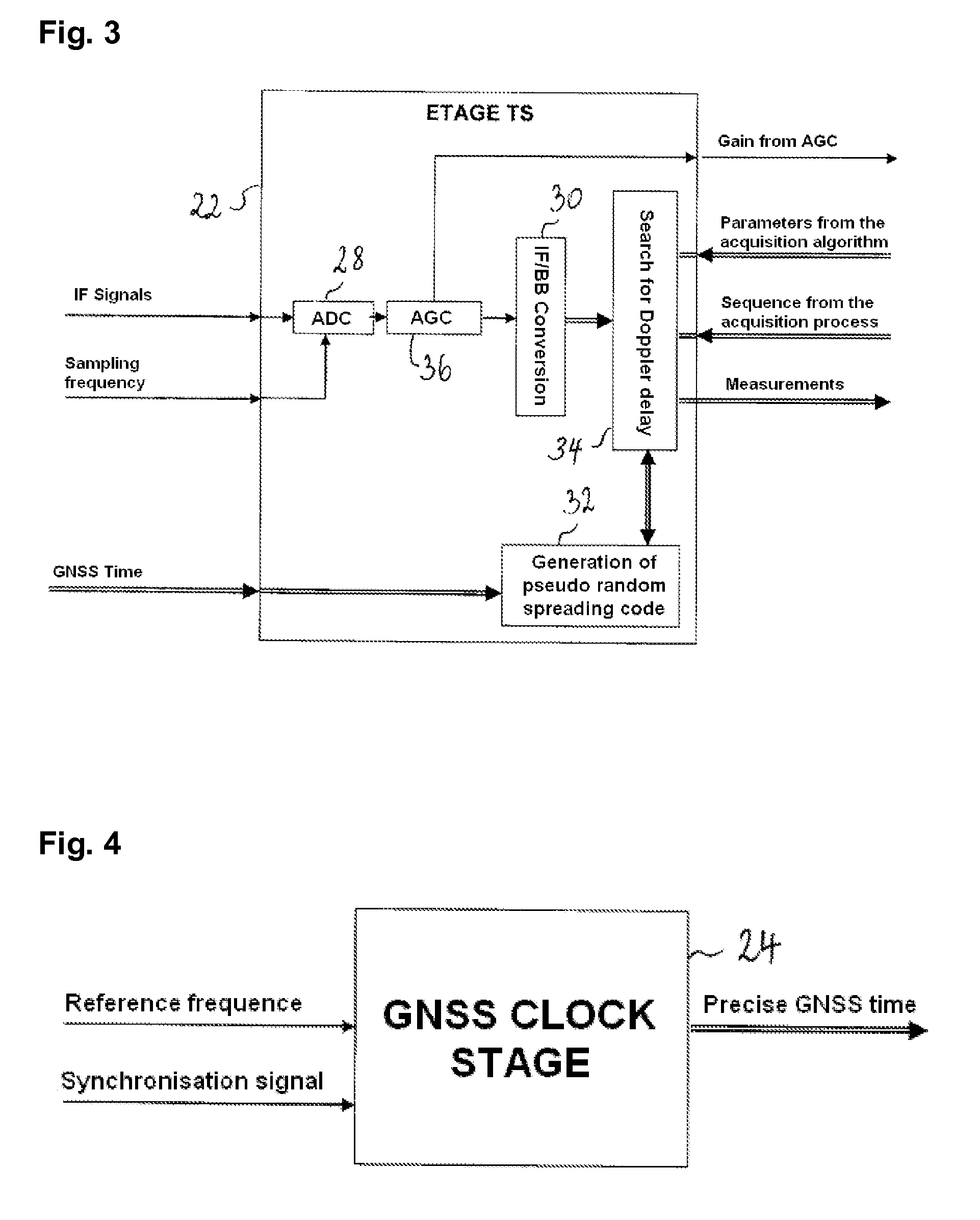Method for the acquisition of radionavigation signals carrying spreading code with a quasi-infinite period
a radionavigation signal and quasi-infinite period technology, applied in the field of radionavigation signal acquisition with quasi-infinite period, can solve the problems of sub-carrier spreading waveforms, difficult acquisition and tracking, and the disadvantage of ambiguity of tracking code loop discriminators that exhibit a higher precision given by sub-carriers
- Summary
- Abstract
- Description
- Claims
- Application Information
AI Technical Summary
Benefits of technology
Problems solved by technology
Method used
Image
Examples
Embodiment Construction
[0032]Un example of an acquisition module for radionavigation signals is shown schematically in FIG. 1 as part of a GNSS receiver. The receiver 10 comprises an antenna 12, a front end radio frequency stage 14, an oscillator 16 as well as the acquisition module 18 that regroups an RF / IF conversion stage 20, a signal treatment stage 22, a clock stage 24 and a command and control stage 26. The acquisition module receives a synchronisation signal from an external time auxiliary, depicted in FIG. 1 as timeserver GNSS 27 (which is not normally part of the GNSS receiver but is linked in communication with it).
[0033]The RF / IF stage 20 is shown in more detail in FIG. 2. It ensures the transposition of the radionavigation signals received in the radio frequency band (RF) towards an intermediate frequency (IF), the generation of the sampling frequency for the analogue to digital converters (ADC) downstream from the signal treatment stage 22, the maintenance of the signal strength about the opt...
PUM
 Login to View More
Login to View More Abstract
Description
Claims
Application Information
 Login to View More
Login to View More - R&D
- Intellectual Property
- Life Sciences
- Materials
- Tech Scout
- Unparalleled Data Quality
- Higher Quality Content
- 60% Fewer Hallucinations
Browse by: Latest US Patents, China's latest patents, Technical Efficacy Thesaurus, Application Domain, Technology Topic, Popular Technical Reports.
© 2025 PatSnap. All rights reserved.Legal|Privacy policy|Modern Slavery Act Transparency Statement|Sitemap|About US| Contact US: help@patsnap.com



